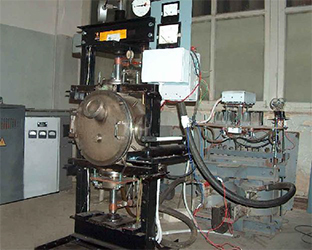In 1991, in the former Soviet Union the major political and economic changes took place. Georgia declared independence. Immediately, the existing economic ties were broken off. The science was in a state of stagnation. Many skilled workers left academia. In such circumstances, the Institute still managed operation through obtaining of foreign research grants.
As a result of the country’s 2006 reforms in education and research, the Institute was removed from the Georgian Academy of Sciences. The Institute had obtained the status of a legal entity of public law and was introduced under the Ministry of Education and Science of Georgia. From this moment, the Institute management had been replaced as well. Head of a laboratory at the Institute, Doctor of Technical Sciences, Professor Giorgi Tavadze was elected Director of the Institute.
In such a difficult period for the Institute, one must say that G.Tavadze with his contagious optimism was able to turn the Institute staff in confederates and together they began to think about the keeping of the Institute. But, for this it has become a necessity the full modernization of the technical facilities in the Institute. From retained resources: the melting shop was enhanced andthe rolling mill was fully re-planted;with technical assistance from the Rustavi Metallurgical Plant it was installed a new uninterrupted casting machine producing sheet strips (which refers to the vital task of the plant). The arc-furnace for the recycling of the man-made waste was mounted, the outcome of which is of national importance as it serves the resolution of the key environmental problems.
The powder metallurgy directions, in particular, the obtaining of special materials from nanopowders, were enhanced as well. It was developed setting for pressing by the electrical spark method. At the stage of revival are Institute’s Laboratory of Corrosion and Corrosion-Station in Batumi.
Following the reforms conducting at the Institute, many problems elaborated in the laboratories have acquired the form of a production model. As a result, the Institute’sintellectual product has become a necessity in the fields of special ceramic and metal-ceramic materials, novel steels, powder metallurgy, corrosion protection, and so on; and Institute had been in the sphere ofnational interests.

Equipment of electric-spark press
In particular, in 2011 the Institute was removed from the Ministry of Education and Science and was transferred under the jurisdiction of the Ministry of Defense and as LEPL it was associated in the SMSTC “Delta”. This is the last stage in the revival and renewal of the Institute.